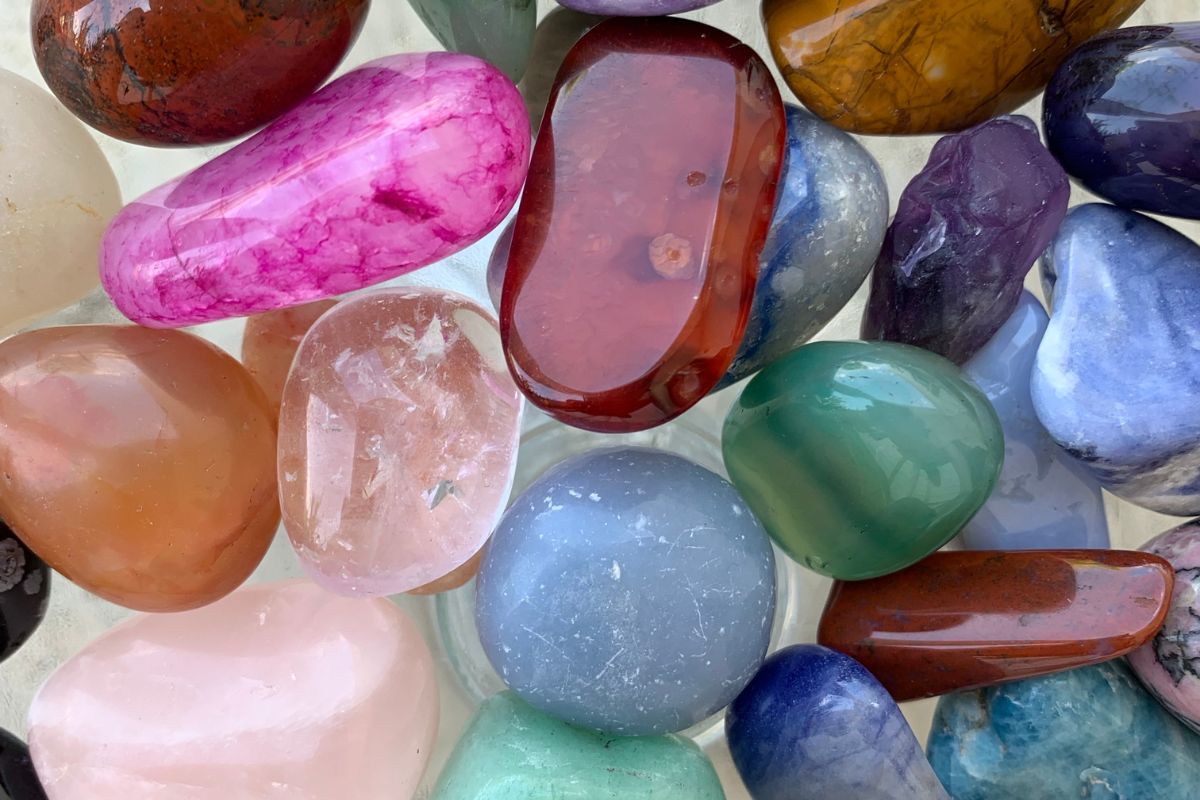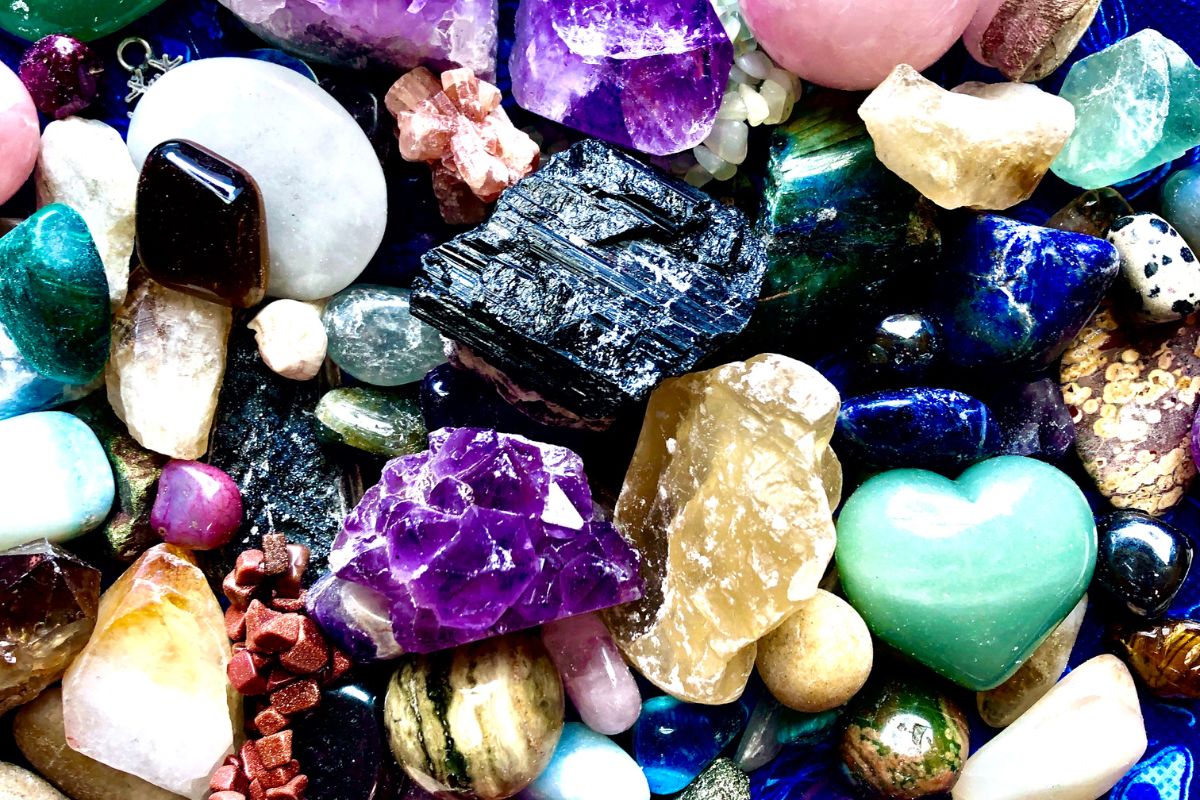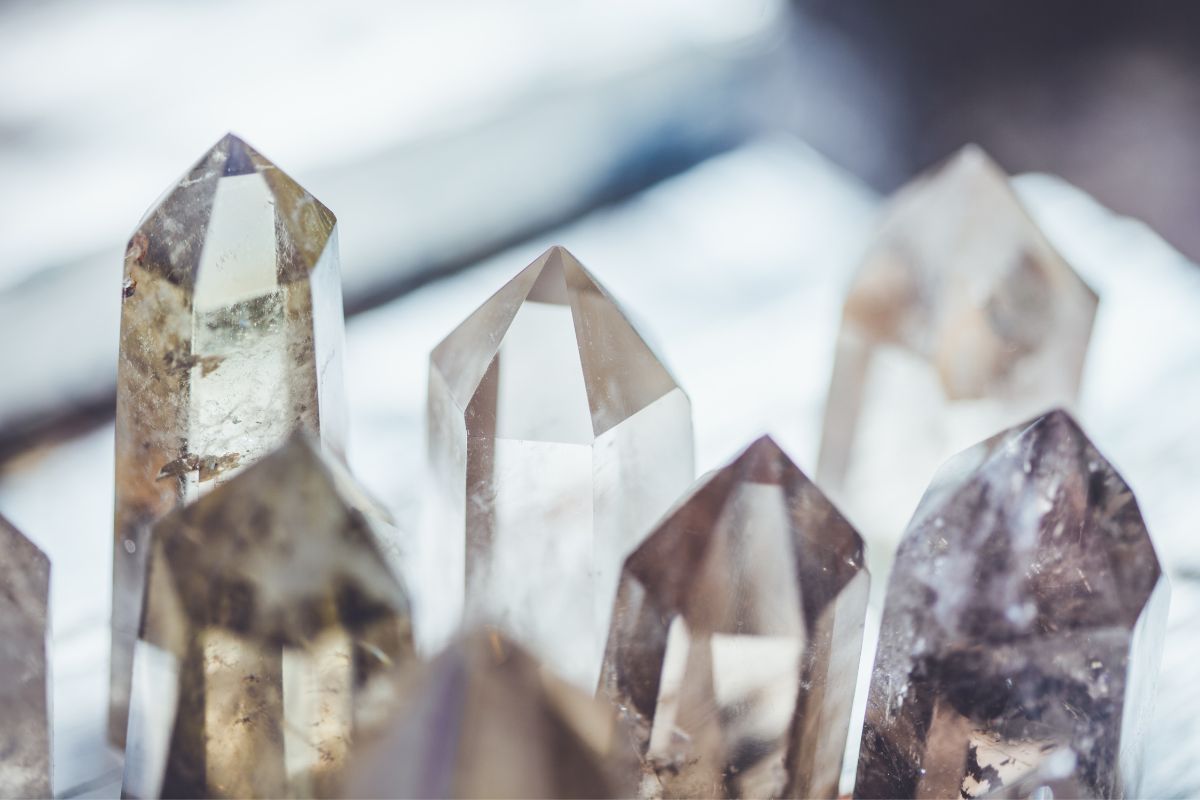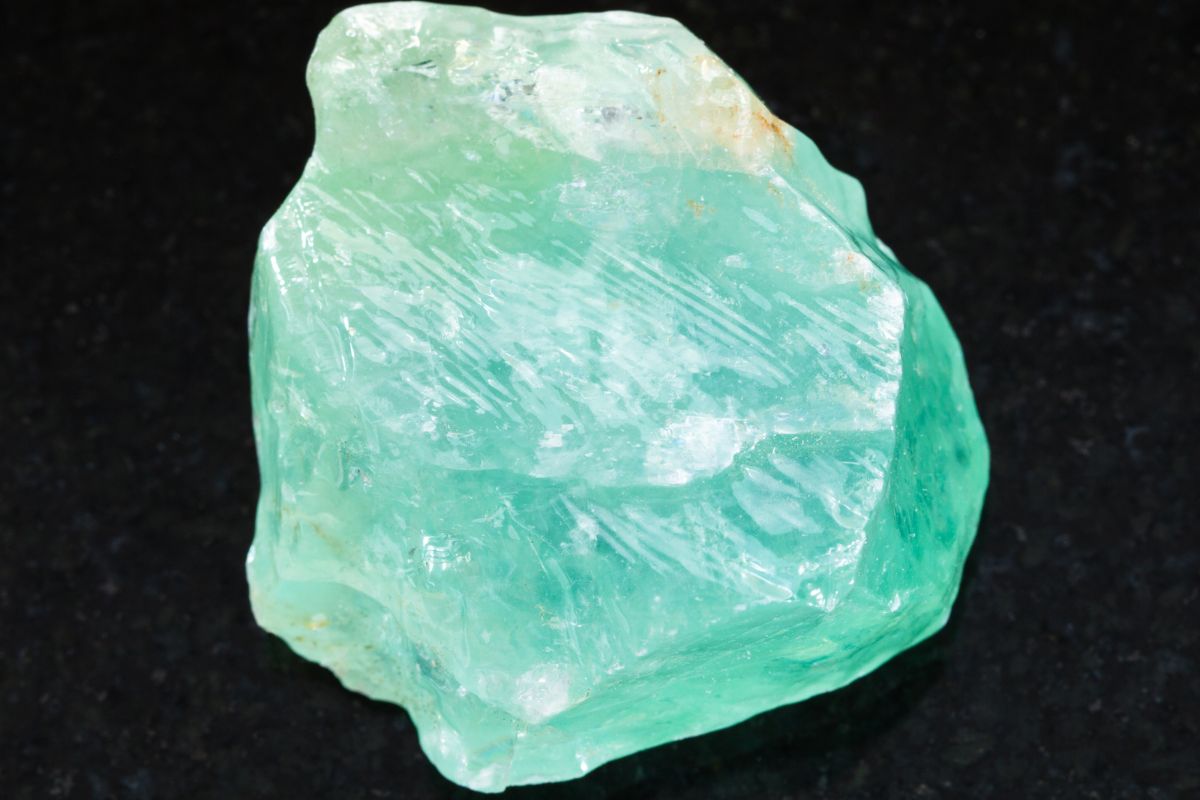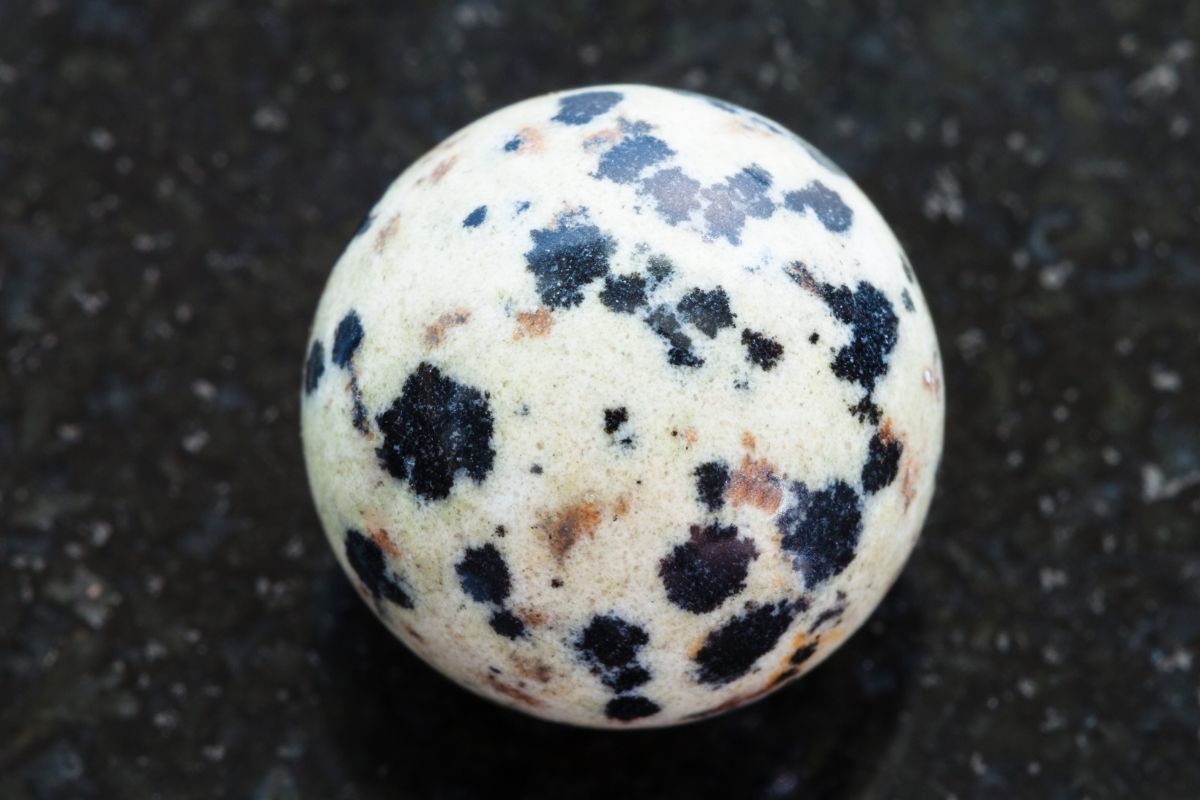Although it has belonged to both September and May in the past, we currently understand agate to be the October birthstone.
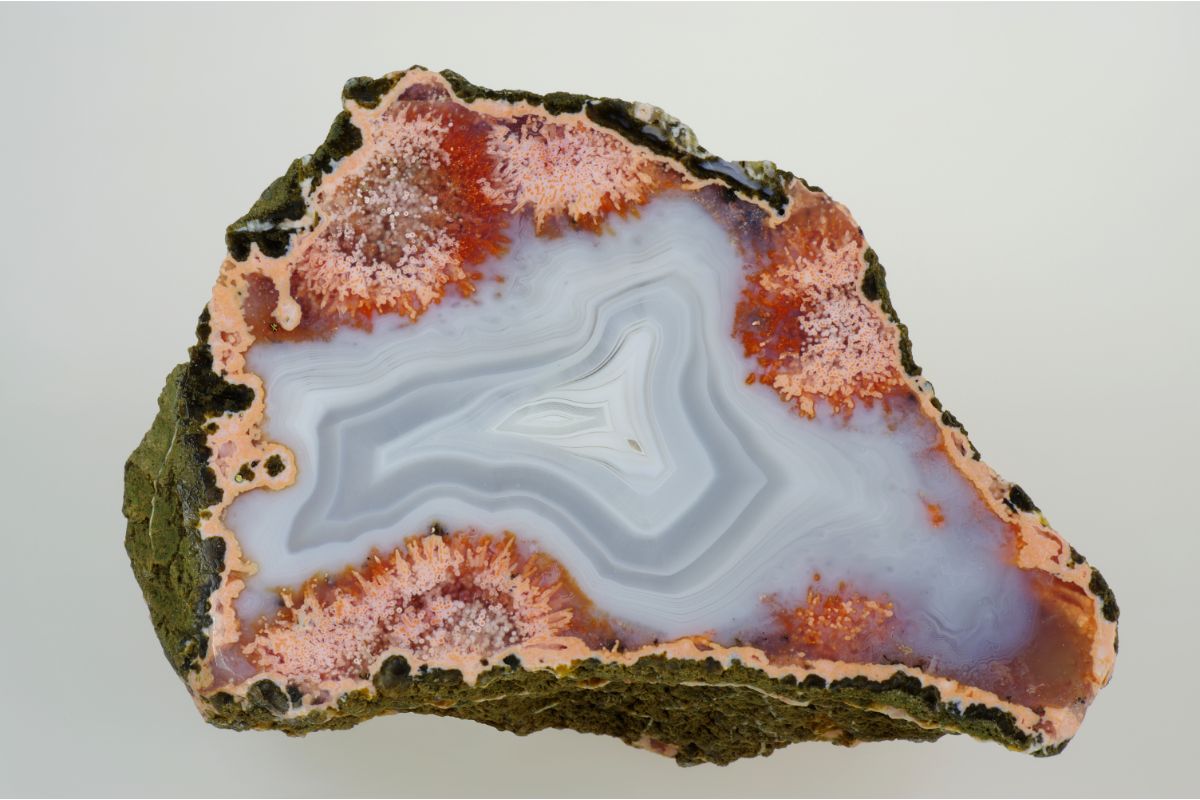
And being that it’s a remarkably colorful type of banded quartz, we feel it’s a very fitting gem for the fall period, but that’s not to say it only has use and meaning to Libras.
It’s the astral birthstone of Cancer, and historically, agate was considered a powerful protection stone against foul witchcraft and other harmful negative energies, but this is really just scratching the surface of this impactful gem.
So, let’s dig a little deeper to uncover the true meaning of agate.
What Does Agate Symbolize?
Agate means a lot of different things to a lot of different people, but it’s generally accepted by most crystal enthusiasts to be a symbol of good health.
This is no doubt in part to the stone’s own longevity thanks to a high score of 7 on the MOHs hardness scale.
Agate celebrates a long-established association with wellness that goes back as far as the Romans and Ancient Egypt.
It was thought that keeping this stone nearby would help galvanize the immune system against poison, earning it pride of place in the jewelry and homes of some of history’s most esteemed leaders.
The Romans also praised this beautiful gem for good harvests. Hence, farmers weren’t strangers to agate either.
And those who believed it to be their birthstone would carry it with them on travels to protect against all forms of danger, be it witchcraft, natural disasters, predators, or disease.
Certain types of pieces of agate jewelry were said to have their own specific meanings too.
For instance, cameo rings with alternating agate colors were believed to generate wealth via inheritance, the discovery of treasure, or by other means.
Agate is also linked to harmonization and rebalance, helping to soothe troubled souls and keep their thoughts straight, no matter the perils and problems that lie ahead, and should you catch a glimpse of agate in your sleep, it symbolizes a journey.
Agate Etymology
As far as we know, the name agate is derived from the river Akhatēs in Sicily where an abundance of these rocks was discovered, but experts are hesitant to make any definite assertions, as it’s quite possible that the inverse is true and the river was named for the stone.
This would mean the etymological root of agate stemmed further back into unknown histories. The Ancient Greek name of Achates is also taken from this word, meaning “friend” or “loyal”.
Agate In Culture
Agate has played a pivotal role in many different cultures. Known as “Shevo”, in Jewish history, agate was the 8th stone in the breastplate of judgment, a sacred garment worn by the High Priest of the Israelites.
This stone was also chosen for a set of rings by Pyrrhus of Epirus (a prominent Greek king and statesman) to symbolize Apollo, the oracles, knowledge, art, and his 9 muses.
But perhaps the most recent instance of culturally significant agate is the story of Queen Elizabeth and her agate ring shaped to her profile.
The tale goes that the queen bequeathed the ring to the Duke of Earl, remarking to him that if he ever needed assistance, he could return the ring in exchange for a favor.
According to historians, the Duke of Earl did eventually find himself in a sticky situation… held prisoner in the Tower of London.
So, he sent a messenger to deliver the ring to the queen, but alas, the messenger is said to have claimed the ring for themselves.
Types Of Agate
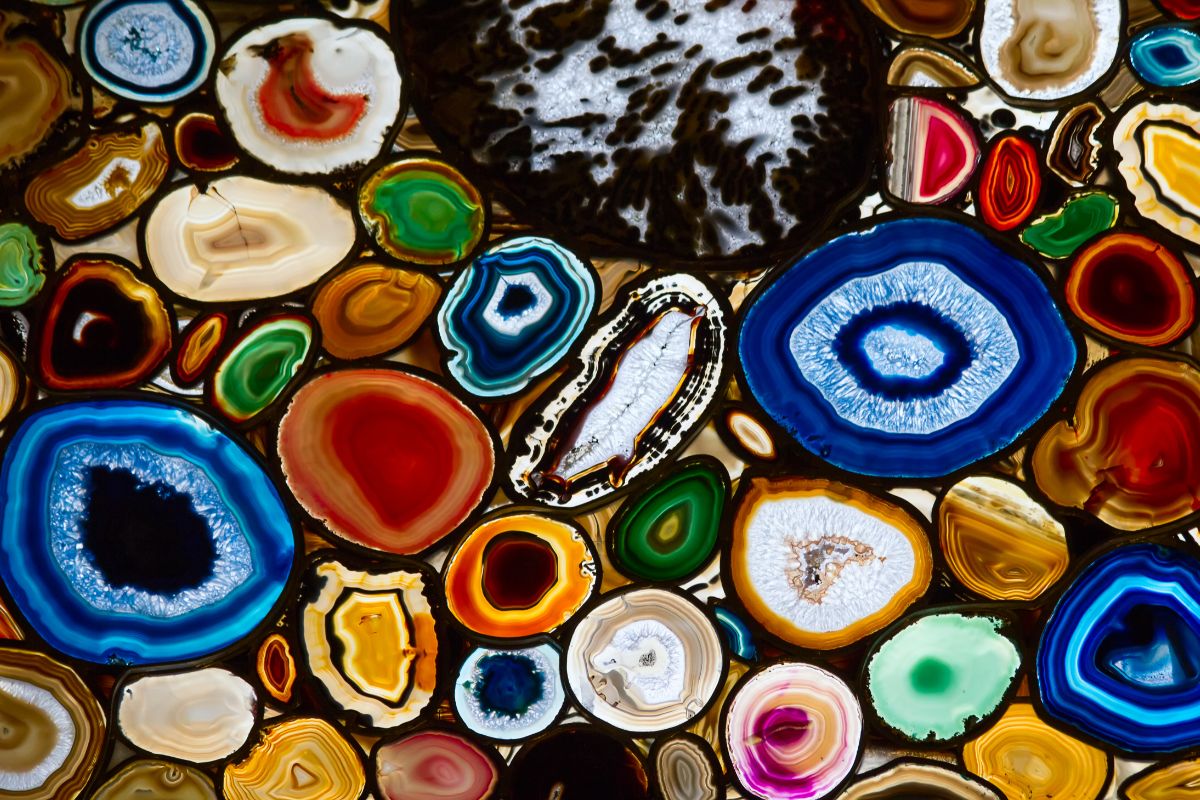
There are a number of agate variants, but even though certain types have been used for different purposes throughout history, they’re all considered October birthstones. They include…
- Picture Agate — Well defined natural inclusions that look almost man-made
- Blue Lace Agate — Powder blue hue with delicate white banding
- Banded Agate — Alternating bands of color
- Plume Agate — Feathered mineral inclusions look cloudish
- Moss Agate — As the name suggests, the inclusions in moss agate look as though a colorful moss has grown on the surface of the stone
Of all agate varieties, moss agate has likely had the largest impact on civilization, starting with the Romans’ claim that this stone was endowed with special powers by the gods.
Many years later, the Romani people chose moss agate as their most prized gem, believing it brought good fortune.
There was also a time in Far Eastern history in which moss agate became exceedingly popular for its alleged powers of influence, an attribute lawyers paid close attention to.
The Colors Of Agate
One of the most astounding things about agate is that it can be found in a variety of colors, including black, red, blue, green, white, yellow, pink, gray, purple, brown, or a mixture.
Each color offers a slightly different slant on the symbology and metaphysical properties of agate:
- Black = Equilibrium
- Red = Introspection
- Blue = Expression
- Green = Courage
- White = Purity
- Yellow = Revitalization
- Pink = Security
- Gray = Self awareness
- Purple = Positivity
- Brown = Even temperament
Final Thoughts
There you have it — Agate is the October birthstone, and it has a number of meanings that change with the characteristics of the stone in question.
However, of all this stone symbolizes, the most prominent throughout history has been good health.
- 15 Crystals That Cannot Be Exposed To The Sun - January 7, 2024
- Malachite Vs Fuchsite – Benefits And Uses - January 7, 2024
- Malachite Vs. Green Jasper: Benefits And Uses - January 7, 2024

